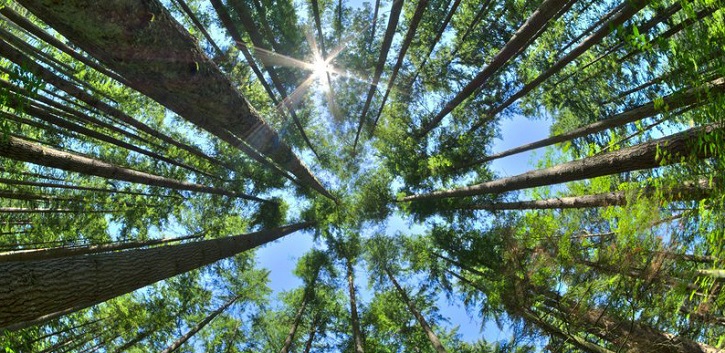UCC on RTÉ Brainstorm: How sound helps us to visualise our environment

Sounds give us a representation of the world around us every bit as vivid and evocative of the visual landscapes that compete for our attention.
From its beginning, the discipline of geography has primarily concerned itself with understanding the world through inherently visual terms. Geographical obsessions with maps and mapmaking - an activity that has been intrinsically linked to conquest, indigenous disempowerment and empire building - very much relied on the visual gaze to quantify, understand and ultimately order the world.
That the world has been structured from a Western perspective was the intended outcome rather than an unforeseen consequence. The close links geography shares with the military continues to this day, and anyone who has seen Brian Friel’s magisterial play Translations will understand how these relationships coalesced during the period in which the play is set, in what was then the very first complete ordnance survey of any country in the world.
Map-making, taxation and control define such activity, and the visual was used to codify and validate it. The role played by sounds in the landscape, by contrast, has only recently begun to receive the attention it deserves. Just like visual cues, "sounds combine to form systems of meaning that can serve to simultaneously transmit, reify, challenge, or reinvent sociocultural norms and values" (Walter S Gershon, 2011).
The term soundscape is beginning to challenge the dominance of landscape in geographic writing and thinking. Writing for the Smithsonian Centre for Folklife & Cultural Heritage, Marinna Guzy defines soundscapes as "sound understood as an environment".
If one closes one’s eyes, whether you are in a field, standing at the edge of a busy street or sitting at a desk in an office, the flow of competing noises orient the listener into their immediate environment much the same way as visual cues do. Do this long enough and the sounds begin to take on greater spatial resonances as the listener distinguishes the distances of individual noises, the level of threat the object producing them might pose or the kinds of emotional responses they arouse.
All of these combine to give us a representation of the world around us every bit as vivid and evocative of the visual landscapes that compete for our attention. The power of sounds affect us in many ways. You only have to watch a scary movie scene with the sound turned down to see a difference in our perception of what might be a threat. A shadowy figure approaching the screen usually does not appear as threatening to us without the audio cues that signal danger to us. The famous theme to Jaws by John Williams comes to mind.
Soundscapes, and the soundmarks hat comprise them, contribute to and inform the knowledges we experience throughout our lives. For example, Australian Aboriginal peoples used songlines, audio-visual mind maps sketched in sounds through songs that helped the initiated navigate the vast Australian continent. By singing verses in the correct sequence, they were able to use identifiable visual markers in the landscape, such as rivers or mountain ranges, to note which areas were safe to travel and which were not.
Though more often ignored until they are gone, soundmarks in a soundscape are just as important to us as visual landmarks for identifying or remembering a place. The iconic calls of cicada conjure up images of a Japanese summer to listeners who have been there. Japanese cinema abounds with them, especially when depicting a summer scene.
In Ireland, the corncrake was once the ubiquitous summer meadowland bird found throughout the country. It’s call, now absent and in danger of extinction in Ireland except in a few vulnerable pockets along the river Shannon, used to occupy a similar space in Irish country lore as the cicada still do in Japan today.
From RTÉ Radio One's Mooney Goes Wild, Anita Donaghy, Senior Conservation Officer with BirdWatch Ireland, discusses the demise of Ireland's corncrake population
The very close connections sounds have to specific contexts of time and place has become a growing field of interest across the disciplines since the 1940s. Scholars in music studies, anthropology, film studies and ecology have recognised the cultural and ecological importance of sound in both human and natural environments.
The musician and soundscape ecologist, Bernie Krause, has been collecting recording of the natural world since 1968. Over this period, he has demonstrated how natural environments are profoundly affected by human beings, even when carrying out relatively environmentally-friendly activities in an area. In his book The Great Animal Orchestra: Finding the Origins Of Music In the World’s Wild Places, he describes some of the planet’s most compelling bioacoustic soundscapes and how they may have helped contribute to the development of music and human speech.

Krause divides sounds into three categories: biophany (sounds made by animals and plants); geophany: (natural sounds such as those made by wind and rain) and anthrophany (human-induced noises that disproportionately impact on the ecosystems that experience them). He puts forward the niche hypothesis that the healthier and more stable the habitat, the greater the complexity and range of musicality expressed by the creatures that occupy it. Essentially, reductions in biodiversity lead to the desertification of a habitat’s acoustic signature.
In the book, Krause provides an example of an old-growth forest in western United States where he recorded the biophany of the area before and after selective logging had taken place. Conventional understanding suggested that selective logging practices would have a minimal impact on the forest’s biodiversity, especially when compared to clear-cutting that usually takes place. The healthier and more stable the habitat, the greater the complexity and range of musicality expressed by the creatures that occupy it
But through his recordings, Krause was able to demonstrate that the bio-acoustic soundscape had changed dramatically even though the forest appeared to be largely untouched in visual terms. The real impact of the logging, even "environmentally sensitive" practices as in this instance, could only really be understood by measuring it soundscape. In effect, the bio-acoustic signature had been devastated after logging had taken place with Krause recording the absence of most of the species of bird and insect captured during the first recording.
Considering we are already in the midst of a sixth mass extinction event, understanding the significance of a habitat’s soundscape as an indicator of a healthy biome is profoundly important - especially if we are going to make a realistic attempt to check biodiversity collapse.
By Breffni Lennon who works in the Cleaner Production Promotion Unit in the School of Engineering at University College Cork.
For more about the School of Engineering visit here
This article first appeared on the RTÉ Brainstorm platform. Read here
For more on this story contact:
Ruth Mc Donnell, Head of Media and PR, Office of Marketing and Communications, UCC Mob: 086-0468950
